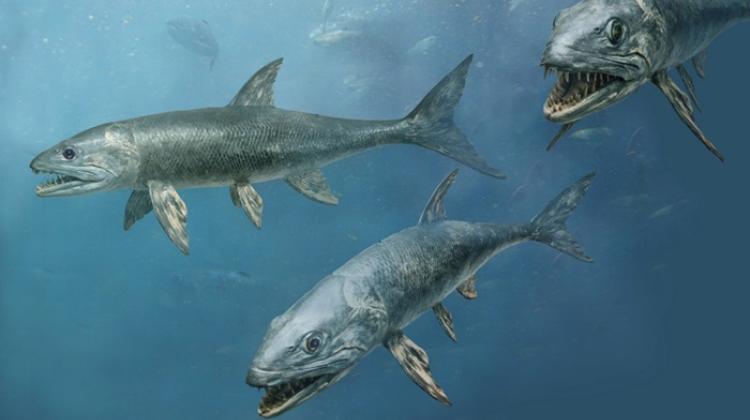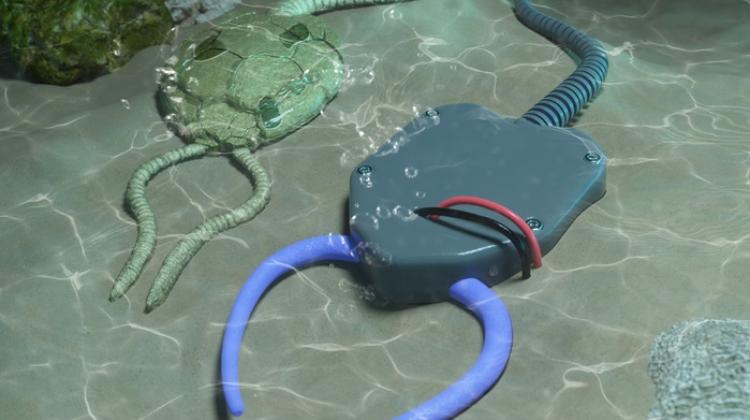Analyses of turtle bones help understand why the reptiles fled from land into water
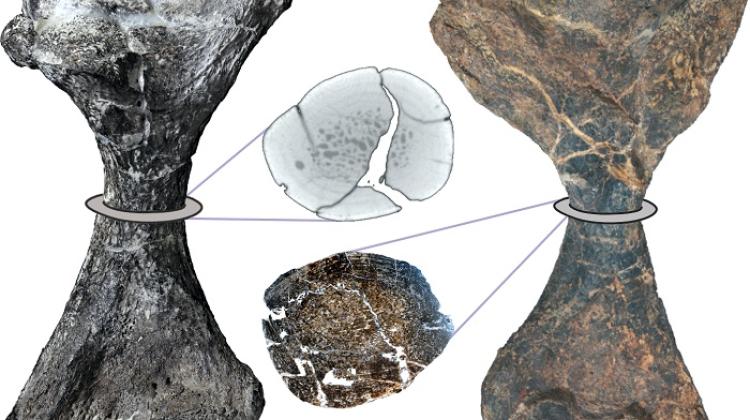 Credit: Tomasz Szczygielski
Credit: Tomasz Szczygielski
The first species of turtles on Earth over time began to prefer the aquatic environment over the land one. Water helped them protect themselves from increasingly large, predatory dinosaurs. The analysis of the bones of these species, carried out by Polish scientists, helps understand the living environment of the oldest turtles.
Researchers from the Institute of Paleobiology of the Polish Academy of Sciences and the Universities of Zurich and Bonn, having access to unique resources of prehistoric turtle bones discovered over a decade ago in Poręba, Poland and Frick, Switzerland, wanted to explain at what point in the evolution of these animals specific adaptations appeared in bone structure. Can we learn anything about the habitat of the earliest turtles based on these structures? The researchers answer these questions in the journal Comptes Rendus Palevol.
NOT ALL BONES ARE EQUAL
Dr. Tomasz Szczygielski from the Institute of Paleobiology of the Polish Academy of Sciences explains that the structure of limb bones is schematic in almost all tetrapods. The bones are composed of a long, usually hollow shaft, which can be compared to a tube of compact bone, and inside there is spongy tissue and bone marrow. This structure occurs in various variations in most animals. It is usually very closely related to the living environment.
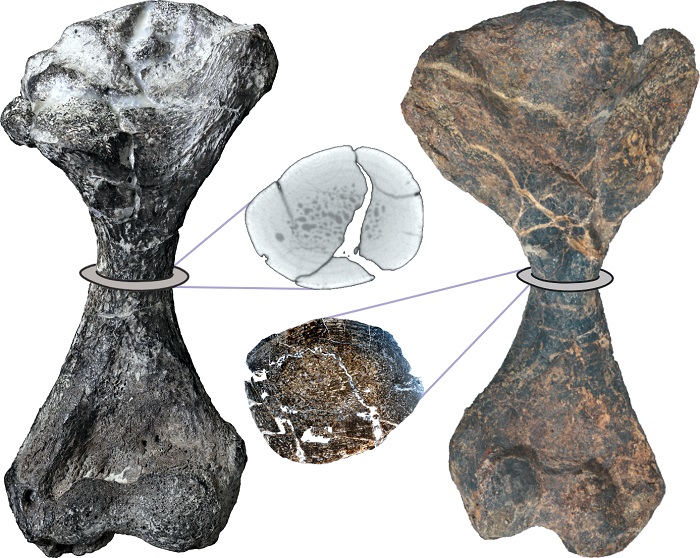
'As mammals, we are land animals, so our bones are tubular. For biomechanical reasons, it is a very durable and resistant structure which increases the resistance of bones to loads and fractures. It is similar in birds, but there are air sacs inside their bones, which make the bones lighter while still durable,’ says Dr. Szczygielski.
In aquatic animals, bones become significantly strengthened and developed, and their density increases. They begin to act a bit like ballast to overcome the buoyant force created by the air in the animal's lungs. The animals that are already very well adapted to the aquatic environment, have other mechanisms for regulating buoyancy and storing oxygen, so their bones cease to function as weights and become more porous.
UNIQUE LIKE A TURTLE
'Turtles are specific in this respect. Most turtles that have lived in the world since the Mesozoic to this day are aquatic and semi-aquatic animals. In their case, we do not observe a clear marrow cavity in the middle of the bone, nor the relationship between bone density and the environment like the one we observe in other quadrupeds,’ Dr. Szczygielski says.
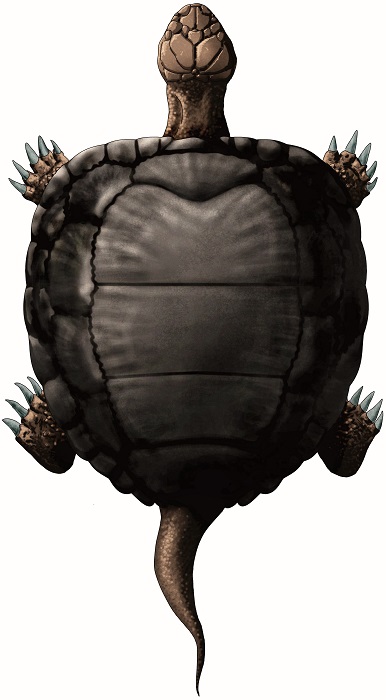
As they adapted to the aquatic environment, their bone density decreased due to the fact that they had a shell that itself acted as a weight. Therefore, there is no need for the limb bones to develop their density.
Dr. Szczygielski explains that already very early, in the Late Triassic (approx. 215 million years ago), specific features of turtle bone structure appeared: lack of a marrow cavity and poor blood supply to the bone tissue. Even these earliest turtles evolved differently than other tetrapods.
Scientists from the Institute of Paleobiology at the Polish Academy of Sciences, the University of Zurich and the University of Bonn examined the two best-known species of turtles from the Triassic: Proganochelys quenstedtii from Germany and Proterochersis porebensis, numerous remains of which have been discovered since 2012 in Poręba near Zawiercie. They represent the earliest forms that we can call turtles.
The researchers analysed the bone tissue of Triassic turtles, which grew slowly and was deposited in layers. Incremental lines visible in the cross-section bring to mind tree rings. Based on this, researchers estimate how the bones grew from season to season.
Based on these analyses, it is clear that depending on the species, divergent growth strategies could be observed among the earliest turtles. Growth rates varied especially in the young, so individual turtle species reached comparable sizes at different stages of their lives.
'We know that Proganochelys quenstedtii (the species from Germany) reached very large sizes. Its carapace was over 60 cm long, and the entire turtle was over one metre long. It had a long tail, a rather large head and a long neck. Proterochersis, on the other hand, was previously considered a much smaller turtle. Our research indicates, however, that ultimately it could have had a body size similar to Proganochelys, but it achieved it at a later stage of life,’ says Dr. Szczygielski.
WHY DID THE TURTLES ESCAPE INTO THE WATER?
Environmental issues may explain these different growth strategies.
Proganochelys was most likely a completely terrestrial turtle, while the species known from Poręba was partially aquatic and partially terrestrial. Therefore, it did not have to defend itself against predators by achieving a large body size. Water kept it safe because turtles are more mobile in it and can escape from predators.
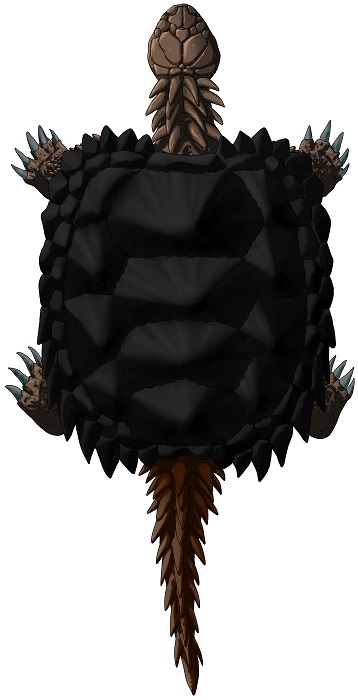
'In the Jurassic age, when larger predatory dinosaurs began to appear on Earth, turtles almost completely disappeared into the aquatic environment. We still observe this tendency to live in water today. Of course, we have tortoises, but they are a small and specialized group that appeared relatively late,’ Szczygielski says.
Although modern turtles have been thoroughly studied, few publications have analysed how the structure of their bones changes with age. In addition, there was very little information about the structure of limb bones in fossil turtles.
Turtles are a relatively constant component of modern and fossil faunas. Due to the fact that they have a hard armour that is easily petrified, scientists mainly focus on it in their research. The limbs are more problematic. Small bones are easily damaged and can also be eaten by predators and scavengers. There are not many of them, so few researchers have paid attention to them so far.
'Thanks to the fact that on numerous specimens of some of the oldest turtles in the world, their full shells and limb bones had been discovered in Poręba, we were able to take a closer look at them. We were able to subject some of them to a destructive testing procedure, which involves making thin plates. Such cuts are essentially translucent, thin slices of bone that can be viewed under a microscope. They provide insight into the structure of tissues,’ Dr. Szczygielski continues.
In 2012, scientists announced the Polish discovery of numerous remains of some of the world's oldest turtles, which lived approximately 215 million years ago. It is a previously unknown species named Proterochersis porebensis, which loosely translates as 'the earliest turtle from Poręba'. (its remains were discovered in Poręba near Zawiercie).
The importance of these finds was even appreciated by naming the local sewage treatment plant Proterochersis porebensis in 2023. Although modern infrastructure will not bring the Triassic species back to life, there are plans to reintroduce the population of the modern aquatic pond turtle to this area.
PAP - Science in Poland, Ewelina Krajczyńska-Wujec
ekr/ agt/ kap/
tr. RL
Przed dodaniem komentarza prosimy o zapoznanie z Regulaminem forum serwisu Nauka w Polsce.






